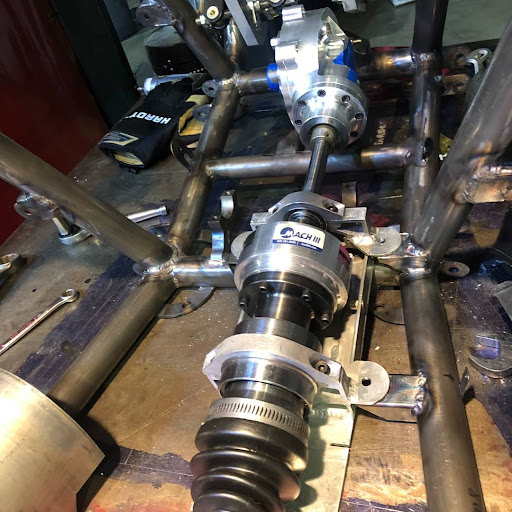Our torque limiters recently played a role in the Baja SAE off-road racing program at two universities, California Polytechnic State University (Cal Poly) and the University of Quebec (UQAM). This racing competition, sponsored by the Society of Automotive Engineers, was created to help young professionals develop teamwork and critical thinking skills about the modern automotive industry. Cal Poly and UQAM each have clubs that compete, and both needed a torque limiter for their recent builds of Baja racers — a small buggy built for high-speed, off-road racing.
Under the Hood at UQAM
For their 2021 vehicle, the UQAM students purchased a repair kit for a V3G2H-STL torque limiter, enabling them to build their own clutch using the kit’s two friction discs. For the 2022 competition, the team built a new four-wheel drive system that has even more torque. Working with our engineers, the students used an alternative friction disc that offered a higher coefficient of friction (CoF), meeting the requirements for higher torque.
In addition, the students needed to transmit 100 Newton-meters (Nm) at 700 rotations per minute (rpm) but were limited in terms of available space. They needed to use the smallest number of discs that were the same size as the discs in their previous 2021 vehicle. Because the students were also using a cam system to engage and disengage the clutch, they were limited in terms of applied axial forces. The driver needed to be able to control the clutch with a reasonable amount of force — no large lever required.
The UQAM team’s new vehicle now integrates B3F2H-STH friction discs with similar dimensions to the previous design. This model is the same size as the previous discs, but its higher-friction material provides more torque with a CoF of 0.4. The team ordered six discs.
Under the Hood at Cal Poly

Until recently, if a team placed in the top ten, then it must redesign at least 25 percent of the car. Although Cal Poly has placed in the top ten for the last four years, the team usually redesigns the entire vehicle each year to give all the students an additional design opportunity. The Cal Poly students can manufacture 80 percent of the vehicle in their shop, and even the shocks are custom-built by a student who interned at a suspension manufacturer.
Recently, however, the SAE changed the competition rules, requiring a four-wheel drive instead of a two-wheel drive. This change prompted the team to search for a torque limiter that allowed the vehicle’s front differential to slip at a controlled rate. Since these vehicles operate on rugged terrain, the torque limiter must protect the rest of the powertrain by disengaging in the event a component sticks due to dirt or lodged rocks. The Cal Poly team chose our torque limiter because it met the 700 pound-inch (lb-in) torque and size requirements.
To learn more about our brakes, clutches and torque limiters, check out our website.